Mango Cultivation in India; A Full Information Guide
Mango Cultivation in India ; A Full Information Guide
Climatic Requirement for Mango Cultivation ;
Mango thrives in almost all the regions from sea level to an altitude of 1500 m. It withstands both fairly dry conditions and heavy rainfall provided that there is no recurrence of severe frost during winter as it is hazardous for the young trees. Rain during flowering is harmful.
Soil Requirement and its Preparation for Mango Cultivation;
Important Varieties of Mango ;
|
Early- Season |
Bombai, Bombay Green , Himsagar, Kesar, Suvernarekha |
|
Mid-season |
Alphonso, Mankurad, Bangalora, Vanraj, Banganapalli, Dashehari, Langra, Kishen Bhog, Zardalu, Mankurad |
|
Late – Season |
Fazli, Fernandin, Mulgoa, Neelum, Chausa |
B) Statewise Cultivated Varieties of Mango in India;
|
State |
Varieties grown |
|
Andhra Pradesh |
Allumpur Baneshan, Banganapalli, Bangalora, Cherukurasam, Himayuddin, Suvernarekha, Neelum, Totapuri |
|
Bihar |
Bathua, Bombai, Himsagar, Kishen Bhog, Sukul, Gulab Khas, Zardalu, Langra, Chausa, Dashehari, Fazli |
|
Goa |
Fernandin, Mankurad |
|
Gujarat |
Alphonso, Kesar, Rajapuri, Vanraj, Jamadar, Totapuri, Neelum, Dashehari, Langra |
|
Haryana |
Dashehari, Langra, Sarauli, Chausa, Fazli |
|
Himachal Pradesh |
Chausa, Dashehari, Langra |
|
Jharkhand |
Jardalu, Amrapalli, Mallika, Bombai, Langra, Himsagar, Chausa, Gulabkhas |
|
Karnataka |
Alphonso, Bangalora, Mulgoa, Neelum, Pairi, Baganapalli, Totapuri |
|
Kerala |
Mundappa, Olour, Pairi |
|
Madhya Pradesh |
Alphonso, Bombay Green, Langra, Sunderja, Dashehari, Fazli, Neelum, Amrapalli, Mallika |
|
Maharashtra |
Alphonso, Mankurad, Mulgoa, Pairi, Rajapuri, Kesar, Gulabi, Vanraj |
|
Orissa |
Baneshan, Langra, Neelum, Suvarnarekha, Amrapalli, Mallika |
|
Punjab |
Dashehari, Langra, Chausa, Malda |
|
Rajasthan |
Bombay Green, Chausa, Dashehari, Langra |
|
Tamil Nadu |
Banganapalli, Bangalora, Neelum, Rumani, Mulgoa, Alphonso, Totapuri |
|
Uttar Pradesh |
Bombay Green, Dashehari, Langra, Safeda Lucknow, Chausa, Fazli |
|
West Bengal |
Bombai, Himsagar, Kishen Bhog, Langra, Fazli, Gulabkhas, Amrapalli, Mallika |
|
Hybrid Mango Variety |
Cross |
|
Amrapalli |
Dashehari x Neelum |
|
Mallika |
Neelum x Dashehari |
|
Arka Aruna |
Banganapalli x Alphonso |
|
Arka Puneet |
Alphonso x Janardhan Pasand |
|
Arka Neelkiran |
Alpohonso x Neelum |
|
Ratna |
Neelum x Alphonso |
|
Sindhu |
Ratna x Alphonso |
|
Au Rumani |
Rumani x Mulgoa |
|
Manjeera |
Rumani x Neelum |
|
PKM 1 |
Chinnasuvernarekha x Neelum |
Some Other Hybrid varieties of hybrid Mango are;
Deatials of the Important Mango Varieteies ;
|
Variety |
Characteristics |
|
Alphonso
|
A most important cultivar of mango having good export potential. It shows a good performance in the Ratnagiri area of Maharashtra, and to a certain extent in parts of Gujrat and Karnataka. It has been recommended for North India too Alphonso is known by different names in different areas as Kagji, Badami, Aphur and Hapur etc.
Tree is medium, upright and spreading. Fruit is of medium in size (250 g.). It has thin skin with attractive blush on yellow ground. Flesh is firm and of excellent quality. It has good TSS: acid ratio. In North India fruit ripens in mid July. TSS ranges between 19-21%. The cultivar is prone to spongy tissue. |
|
Amrapali
|
It is a cross between Dusehari X Neelum and has been released by lARI, New Delhi. It is a dwarf and regular bearing cultivar suited for close planting. It is being popularised for its high orchard efficiency. The fruit size is little smaller than Dusehari, but ripens later than Dusehari. Under Punjab conditions it rippers in August Fruit has good keeping quality and fruit flavour. The TSS ranges between 18-20%.
|
|
Banglora (Totapuri)
|
It is the commercial cultivar of South. It is regular and heavy bearing cultivar. Fruit is oblong, large and necked at the base, with prominent beak. Skin thick, golden in colour, flesh firm and flat in taste, Stone is oblong and hairy: TSS varies between 15-16%.
|
|
Banganpali (Safeda)
|
It is a commercial cultivar of south particularly Andhra Pradesh. Fruits command premium price in North Indian markets due to its earlyness. Fruits remain in the market from March and to July. Trees are of medium in vigour, spreading with rounded top. Fruit size medium to large (300-450g.), beakless. Skin thin and smooth, yellow in colour, flesh firm and fibreless, good quality fruit. Stone have few hairs all over. Keeping quality is good. TSS varies between 17-18%. Under Punjab conditions, fruits ripen in July.
|
|
Bombay Green (Malda)
|
It is a very popular cultivar of Ganga-Jamuna plains. In Punjab it is commonly known as Malda. It is heavy bearer with medium-sized fruits of light green colour. Trees are medium to large, spreading and moderately vigorous. Fruits are beakless with round spex. Skin is medium thick flesh soft, fibreless, yellowish with TSS of 17-18%. Stone is densely covered with small hairs. Fruits ripen from May-July. In Maharashtra it ripens in May and in North India it ripens in July.
|
|
. Dusehari (Dashehari)
|
One of the most popular cultivar of North India, with excellent quality and size of fruit. It is being cultivated in south India also. Trees are moderately vigorous, spreading with rounded top. Fruit is oblong with round base. Shoulders are equal and fruit is beakless. Skin is medium thick smooth, yellow, flesh firm, fibreless pleasant flavour. Taste is very sweet. Stone is medium covered with fine fibre. It is a regular bearer. Fruits ripens from June-July. TSS 19-20 percent. |
|
Fazli
|
This cultivar originated in Bhagalpur area of Bihar. It spread to North and West Bengal due to its well-sized fruits. Tree is vigorous and spreading. Large-sized fruits with stone heaving little fibre. The fruits remain light green even at ripening. TSS is 17-18 percent. In Punjab fruits ripen in August. In Bihar it ripens in July.
|
|
Langra
|
A very important cultivar of North India after Dusehari. It originated as a chance seedling in Banaras. Tree is very vigorous and spreading. It is alternate bearer requires more planting distance due to its vigour. Heavy yielder. Fruit size is medium, light green at maturity. Very strong and pleasant flavour. Stone has fine fibre all over. In Punjab it ripens in end July. TSS 19- 20 percent.
|
|
Samar Bahist Chausa (Chausa)
|
This is one of the best late-ripening cultivar of North India. It originated is a chance seedling in Malihabad (U.P.). The tree is vigorous and spreading. It is also an irregular bearer. Fruits are of medium size with equal shoulders, skin medium-thick, flesh firm, and fibreless. Quality of fruit is very good. It ripens from July to the end of August. TSS of pulp 19-20 percent.
|
Propagation of Mango ;
Mango can be grown through seeds or multiplied vegetatively by using several techniques like simple inarching, budding, stone grafting, etc. But, a technique of veneer grafting has been standardized at I.A.R.I., New Delhi for easy and successful propagation of mango. Earlier to this, approach grafting (inarching) used to be adopted which was very cumbersome and was not suitable for large scale multiplication work.
Planting of Mango ;
Time of Mango Planting; The best time for planting throughout the country is during the rainy season, but it can also be planted in Feb./March (during the spring season) provided there is assured irrigation.
Training and pruning of Mango ;
Training of plants at the initial stages is very essential to give them proper shape. At least 75 cm of the main stem should be kept free from branching and the first leader branch may be allowed only after this height. The main branches should be spaced in such a way that they grow in different directions and are at least 20-25 cm apart. Removal of deadwood and thinning of over-crowded and crisscrossing branches after 4 to 5 years is very essential to obtain good results.
Manuring in Mango cultivation ;
During non-bearing stages, 100g N, 50 g P2O, and 100 g K2O per plant per year of age should be applied.
Irrigation Requirement in Mango Cultivation;
Young plants must be irrigated frequently for proper establishment. In the case of grown-up trees, irrigation at 10 to 15 days interval from fruit set to maturity is beneficial for improving yield. However, irrigation is not recommended for 2-3 months prior to flowering as it is likely to promote vegetative growth at the expense of flowering.
Intercropping in Mango Crop;
Inter crops such as vegetables, legumes, short duration and dwarf fruit crops like papaya, guava, peach, plum, etc. depending on the agro-climatic factors of the region can be grown. The water and nutrient requirements of the intercrops must be met separately.
Flowering and fruiting in Mango;
Flowering in the south and west India commences in December whereas in December north India during Feb/ March. It produces the inflorescence terminally. Each consists of 2000 4000 flowers. Two types of flowers are found male and
hermaphrodite. It is hermaphrodite flowers that produce fruits after pollination and fertilization. Such flowers are found from 2 to 70 percent based on variety, temperature, etc. Commercial cultivars in north India like Dashehari, langra, and Chausa are self-incompatible and, therefore, need to be cross-pollinated by inter-varietal plantation. The extent of fruiting depends on several factors like flowering time, percentage of hermaphrodite flowers, the extent of fruit drop, etc.
Fruit drop in Mango Crop;
In certain commercial varieties of mango, fruit drop is a serious problem and causes great loss to the growers. In north India, the process of fruit drop may be divided into three phases e.g. Pin-head-drop, post-setting drop, and May drop.
Alternate Bearing in Mango;
It is also known as biennial bearing and irregular bearings. It is a very serious problem in mango. In this, a tree carries an optimum load of crop in one year but in the following year, it fails to flower and fruit and thereby produce an economic crop. This problem is more acute in some varieties while there are few varieties that are more or less regular bearing ones. Unfortunately, most of the commercial varieties of north India are susceptible to this malady, whereas south Indian cultivars like Bangalora, Banganpalli, etc. are regular bearers. It has been observed that there should be sufficient amount of nitrogen and more of carbohydrates in the shoots which will produce flowers. Apart from this, the level of auxin like substances and inhibitors should be high whereas the level of gibberellin-like substances below. The shoots cannot flower unless this balance is maintained. Investigations are still going on to maintain this balance through the application of chemical substances in different concentrations and periods. To control, spraying of Ethrel at 200 ppm mixed with 0.1% urea five times beginning from the middle of September at monthly intervals has been recommended during the off-year. The evolution of hybrid varieties like Mallika, Amrapalli and Ratna may be helpful in solving this problem.
Mango Malformation;
It is a serious problem in mango which poses a great threat to the mango industry, particularly in northern India. The complex nature of this disease is obvious by diverse claims made for the cause of this disorder. eg physiological, mites, viral and fungal. Until now both the causes and control are not clearly understood. It is of two types: vegetative malformation or bunchy top and floral malformation. Physiologically, the level of inhibitors and auxin like substances used to be high and low respectively in the infected shoots. Foliar spraying of NAA at 200 ppm during October-November followed by pinching of the first flush has helped to control the malady, yet a more acceptable treatment is to be evolved.
Plant Protection in Mango Crop ;
Two sprays (at panicles emergency and at pea size of fruits) of carbaryl (0.15%), monocrotophos (0.04%) or phosphamidan (0.05).
Ploughing interspaces in November and dusting 2% methyl parathion @200 g per tree near the trunk and fixing 20 cm wide 400 gauge polythene strips around the trunk with grease applied on the lower edge in January as prophylactic measures and two sprays of monocrotophos (0.04%) at 15 days interval as control are needed.
One spray of 200 ppm NAA in October followed by de-blossoming at bud burst stage in December – January.
Grafted plants start producing fruits from the fifth year of planting. No fruiting should be encouraged before this period. Fruits mature 90-100 days after flowering. The proper stage of maturity of fruits may be judged either by a change in color or by dipping the fruits into water. Fruits change their color from dark green to yellow in several varieties.
Post-Harvest Management in Mango Crop;
The shelf life of mangoes being short (2 to 3 weeks) they are cooled as soon as possible to the storage temperature of 13oC. A few varieties can withstand a storage temperature of 10oC. Steps involved in post-harvest handling include preparation, grading, washing, drying, waxing, packing, pre-cooling, palletization, and transportation.



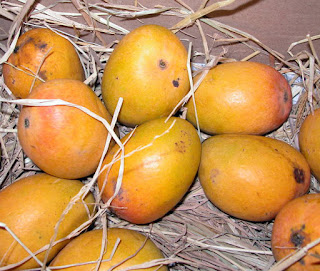
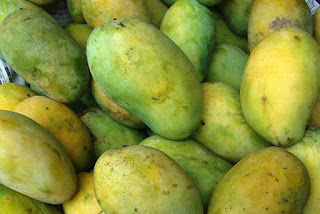
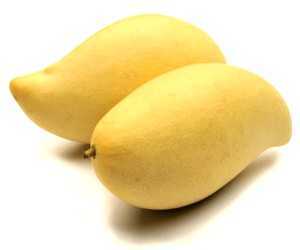
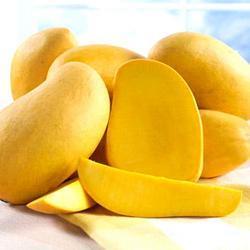
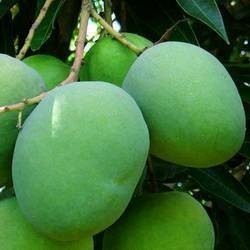
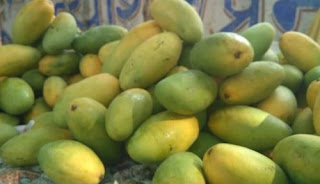
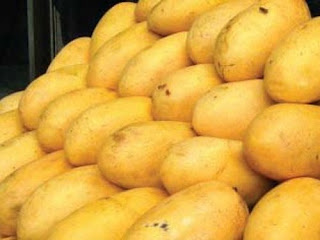
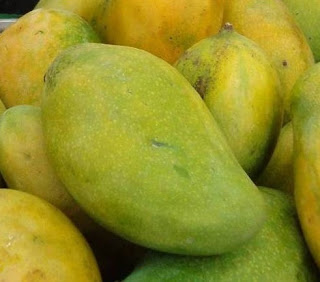
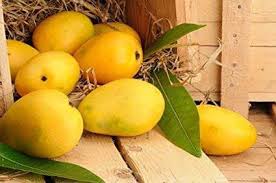

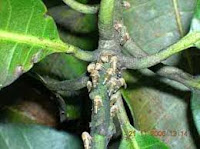
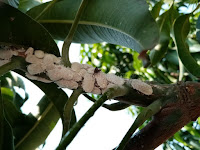
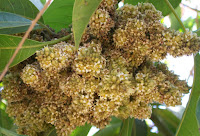

I am very happy to read this. This is the type of manual that needs to be given and not the accidental misinformation that’s at the other blogs. Appreciate your sharing this best doc.